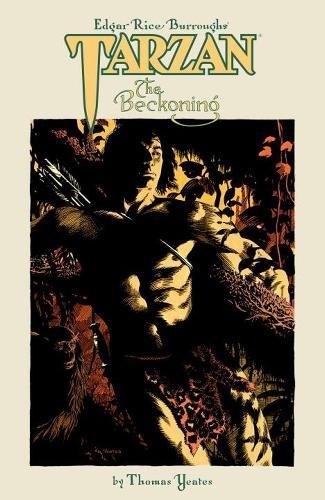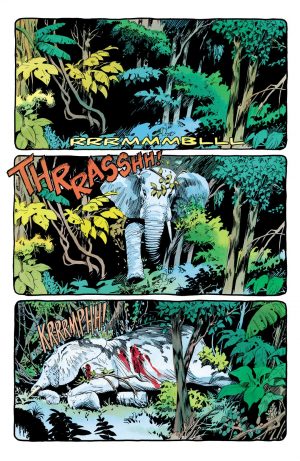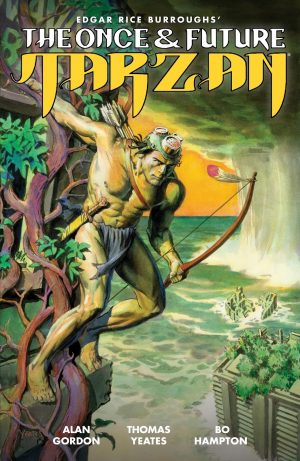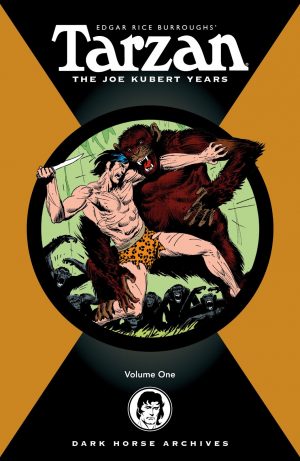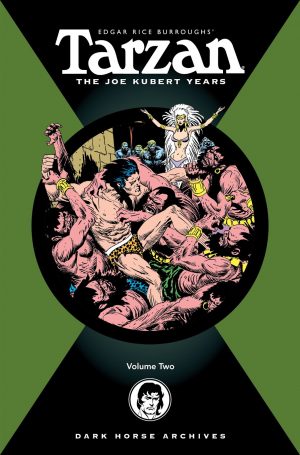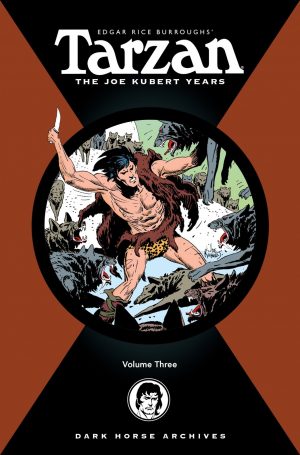Review by Frank Plowright
The future glory of Thomas Yeates as a newspaper strip artist is fully apparent in this collection of a Tarzan story first produced for the Swedish market in the early 1990s with Yeates as both artist and co-writer.
He explains how the shared writing credit came about in his introduction, as editor Henning Kure saw the essence of Tarzan as the stranger in civilisation, whereas Yeates considered his home to be the jungle. What otherwise might be an awkward clash of nature and progress instead produces a well balanced thriller in the present day, showcasing the best of Tarzan in both locations and some thoughts about old ways and new. The lush jungle of the sample art is from the earliest pages of ivory poachers plying their immoral trade, which Tarzan targets in San Francisco. As he does so, though, he’s in turn subjected to the magic of Loc, an African trickster god, and his touch from afar causes Tarzan to revert to ape-man with embarrassing consequences.
There’s a clever reason for this, tying in with Tarzan still being fit and active in the 1990s, and it eventually results in Tarzan’s return to Africa and having to survive on his wits and skills. Once there the clash of ancient ways with modern intrusions is again highlighted, although Yeates and Kure are careful to avoid patronising reinforcement of superior technology. There’s no patronising Jane either, first reintroduced as a social activist, but later also having to rely on instinct and tenacity.
In terms of dialogue, the earlier chapters are over-written, but that becomes a lesser problem as The Beckoning continues. It’s very cinematic, and the switches within are cleverly handled. However, it’s the art that remains the selling point, Yeates pouring heart and soul into exquisitely designed pages featuring an athletic Tarzan, a stunning Jane and countless well designed supporting characters. The environments are beautifully realised, be they city or jungle, and the wildlife equally so, and Yeates even goes to the trouble of using a different inking style on flashback scenes. It should also be mentioned that considering the colour is still what Kathryn Meyer produced in the early 1990s it’s remarkably subtle on the whole. Yeates was still an artist learning his trade, and there are places where that shows, but set against the overall skill and beauty there’s no real cause for complaint.
The final chapter seems to have been produced in a rush. Other inkers are involved, and the ending is very rapid and more than a little too convenient. Again, though, balanced against the fine adventure in its entirety, it’s inconsequential. Yeates mixes Tarzan’s worlds very efficiently and you’d have to have a very narrow view of what Tarzan is not to appreciate The Beckoning.
